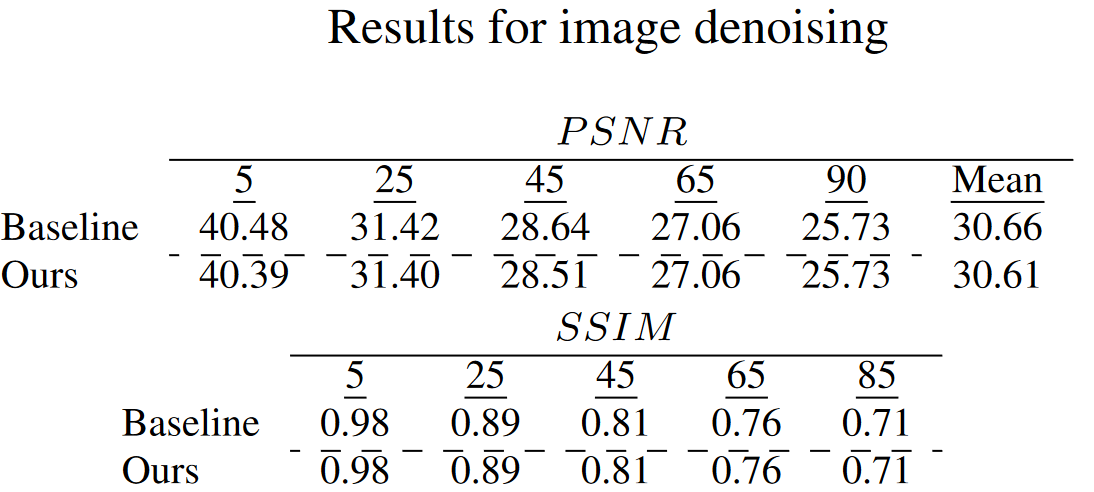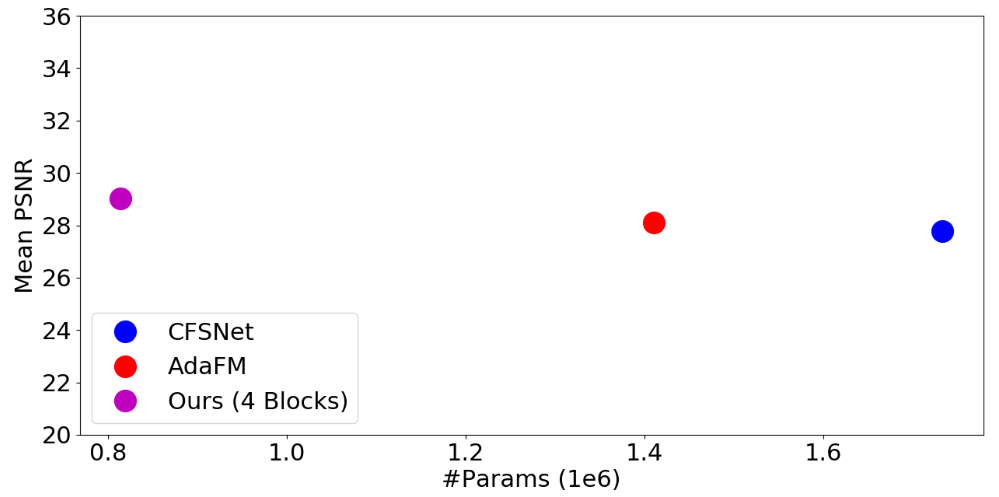
|
|
|
|
|
|
|
2023 IEEE International Conference on Acoustics, Speech, and Signal Processing (ICASSP 2023) |
|
Paper |
Poster |
Code |

|
|
| Adaptive image restoration models can restore images with different degradation levels at inference time without the need to retrain the model. We present an approach that is highly accurate and allows a significant reduction in the number of parameters. In contrast to existing methods, our approach can restore images using a single fixed-size model, regardless of the number of degradation levels. On popular datasets, our approach yields state-of-the-art results in terms of size and accuracy for a variety of image restoration tasks, including denoising, deJPEG, and super-resolution. |

* Baseline is a dedicated model, trained on only a single noise level. |

|

|

|
 |
HYPERNETWORK-BASED ADAPTIVE IMAGE RESTORATION, S. Aharon, G. Ben-Artzi Arxiv |
Acknowledgements |